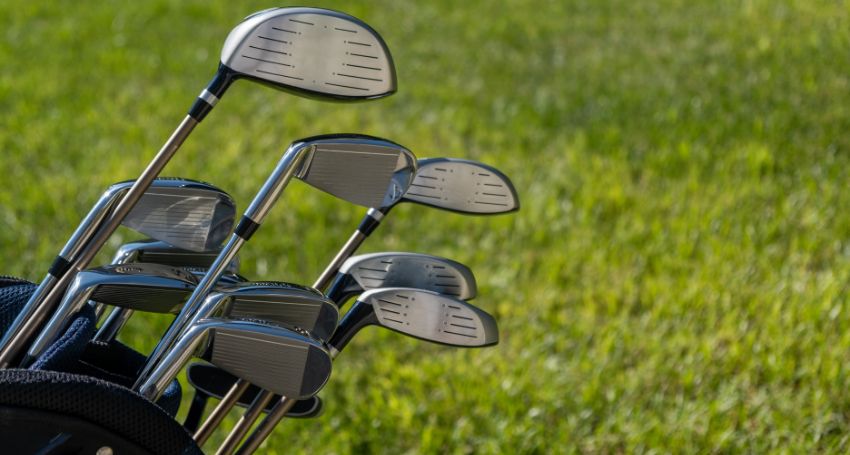Golf is a game where precision and performance are paramount, and your choice of golf equipment can significantly impact your play. Knowing how long golf clubs last, particularly irons, can make a huge difference for any golfer. With advancements in technology and changes in your personal playing style, it’s essential to stay updated on when and why you should invest in new clubs. This guide explores the key considerations for replacing your golf clubs in 2024, helping you make informed decisions about your equipment and ensuring you’re always playing at your best.
Why Should You Consider Replacing Your Golf Clubs?
Replacing your golf clubs can significantly impact your game. Over time, clubs experience wear and tear that can diminish their performance. This is especially true for critical components like the grooves on your irons and the clubhead of your driver. Modern golf clubs are designed with advanced technology that enhances distance control, accuracy, and overall playability. However, when you notice a decline in performance, upgrading to new irons can offer the latest technological benefits, ensuring you maintain your competitive edge.
Moreover, as golf equipment technology evolves, new models often incorporate improvements that can address issues experienced with older clubs. For example, advancements in clubhead design and shaft materials can lead to better forgiveness and more consistent results. Investing in a new set of clubs can help you stay competitive and address any performance gaps you might be experiencing with your current equipment.
How Can You Tell When It’s Time to Replace Your Irons?
Identifying when it’s time to replace your irons involves examining their physical condition and performance. Typically, irons should be replaced every 150 to 300 rounds of golf, depending on how well they are maintained and how frequently they are used. Key signs that your irons need replacing include visible wear on the clubface, diminished spin rates, and decreased distance control.
Worn-out grooves on the clubface are a significant indicator, as they directly affect the lifespan of your irons. If you notice that the types of shots you normally play are not as accurate or you’re struggling with distance control, it might be due to the grooves losing their sharpness. Additionally, if your irons have been used extensively and show signs of physical damage, such as dents or cracks in the clubhead, it’s time to consider getting a new set. Regular assessments of your equipment’s performance and condition will help ensure you’re always playing with the best possible gear.
What Are the Signs That Your Golf Equipment Needs Updating?
Several indicators can suggest it’s time to update your golf equipment. Firstly, if you notice a decline in your game performance—such as inconsistent shots, reduced distance, or difficulty controlling your ball flight—your equipment might be the issue. Golf clubs experience natural depreciation over time, affecting their effectiveness.
Another sign is physical wear on the equipment. Inspect your clubs for visible damage, such as worn grips, dented clubheads, or frayed shafts. These issues can significantly impact your performance and comfort during play. Additionally, advancements in golf club technology mean that newer models often offer features and improvements that older clubs lack. If your equipment is several years old, it may be worth exploring newer options to take advantage of these technological advancements.
Is It Better to Upgrade to New Golf Clubs or Stick with Your Current Set?
Deciding whether to upgrade to new golf clubs or stick with your current set depends on several factors. If your current set is showing signs of wear or you’re not satisfied with your performance, investing in a new set of golf clubs could be beneficial. New clubs often come with the latest technology that can offer improved distance control, accuracy, and forgiveness.
However, if your current set is still in good condition and you’re happy with its performance, there might be no urgent need to upgrade. Consider getting a professional fitting to assess whether newer models could provide significant improvements. Ultimately, the decision should be based on whether the benefits of new technology outweigh the cost of purchasing new equipment.
How Often Should You Replace Your Wedges?
Wedges are essential for your short game, and their replacement schedule can be different from other clubs. Typically, you should consider replacing your wedges every 60 to 100 rounds. The reason for this more frequent replacement is that wedges experience intensive use, leading to faster wear on the grooves.
When the grooves on your wedges become smooth or the clubhead shows signs of significant wear, it’s time to replace them. Well-maintained wedges with sharp grooves provide better control and spin, crucial for effective short game play. Regularly inspecting your wedges and replacing them when necessary will help maintain your performance around the greens.
What Role Do Shafts Play in the Longevity of Your Golf Clubs?
Knowing different types of shafts is a critical component of your golf clubs, affecting both performance and longevity. Shafts can be made from steel or graphite, each with its benefits. Steel shafts are known for their durability and consistent performance, while graphite shafts offer lighter weight and better vibration absorption.
Over time, shafts can experience wear and tear, which can affect their performance. Steel shafts may develop bends or become less resilient, while graphite shafts can fray or lose their original flex. Regularly inspecting your shafts for any signs of damage or wear and replacing them when necessary can help ensure your clubs maintain their optimal performance.
How Does New Golf Club Technology Improve Performance?
New golf club technology offers numerous improvements that can enhance your game. Modern clubs often feature advanced materials and design innovations, such as improved aerodynamics, adjustable weights, and better forgiveness. These advancements can lead to more consistent performance and better results on the course.
For example, newer golf clubs might include improved face technology that enhances ball speed and distance. Additionally, advances in shaft technology can offer better feel and control. By upgrading to clubs with the latest technology, you can benefit from these enhancements and potentially see improvements in your game.
When Should You Replace Your Fairway Woods and Hybrids?
Fairway woods and hybrids should be replaced when they show signs of significant wear or when technological advancements offer substantial performance benefits. Generally, these clubs can last for several years, but their effectiveness can diminish with use.
If you notice a decrease in distance, accuracy, or the clubheads showing signs of wear, it might be time to consider new ones. Evaluating the latest models can provide you with clubs that offer better performance and more features. Regularly assessing the condition of your fairway woods and hybrids will help ensure you’re playing with the best possible equipment.
Should You Buy New Clubs or Consider Used Options?
Choosing between new and used golf clubs depends on your budget and performance needs. New clubs provide the latest technology and are in pristine condition, which can lead to improved performance. They also come with warranties and customization options.
Used clubs, while more affordable, may not offer the latest technological advancements and might have signs of wear. However, if carefully selected, used clubs can still provide good performance at a lower cost. Inspecting used clubs for damage and ensuring they are in good condition will help you make an informed decision.
What Factors Should Guide Your Purchase of New Golf Clubs in 2024?
When buying new golf clubs in 2024, several factors should guide your decision. Start by evaluating the condition and performance of your current set. If your clubs are outdated or showing significant wear, investing in new equipment could be beneficial.
Consider the advancements in golf iron club technology and how they could improve your game. New models often include features such as adjustable settings and enhanced materials. Additionally, think about your budget and whether new clubs align with your goals and playing style. Consulting reviews from reputable sources like Golf Digest and possibly getting a professional fitting can help you choose the best clubs for your needs.
Conclusion
By understanding when and why to replace your golf clubs, you can make informed decisions that will help improve your game and enhance your overall experience on the course. Whether upgrading to a new set of irons or considering a new driver, keeping your equipment in top shape is crucial for achieving your best performance.
Don’t let worn-out clubs hold you back. At SwingFit, we believe that every golfer deserves to play with confidence, using gear that complements their unique swing. If you’re unsure whether it’s time to upgrade your clubs or if you’re looking for personalized advice on choosing the right equipment, our team is here to help. Contact us today and take the first step towards a better game.





























































